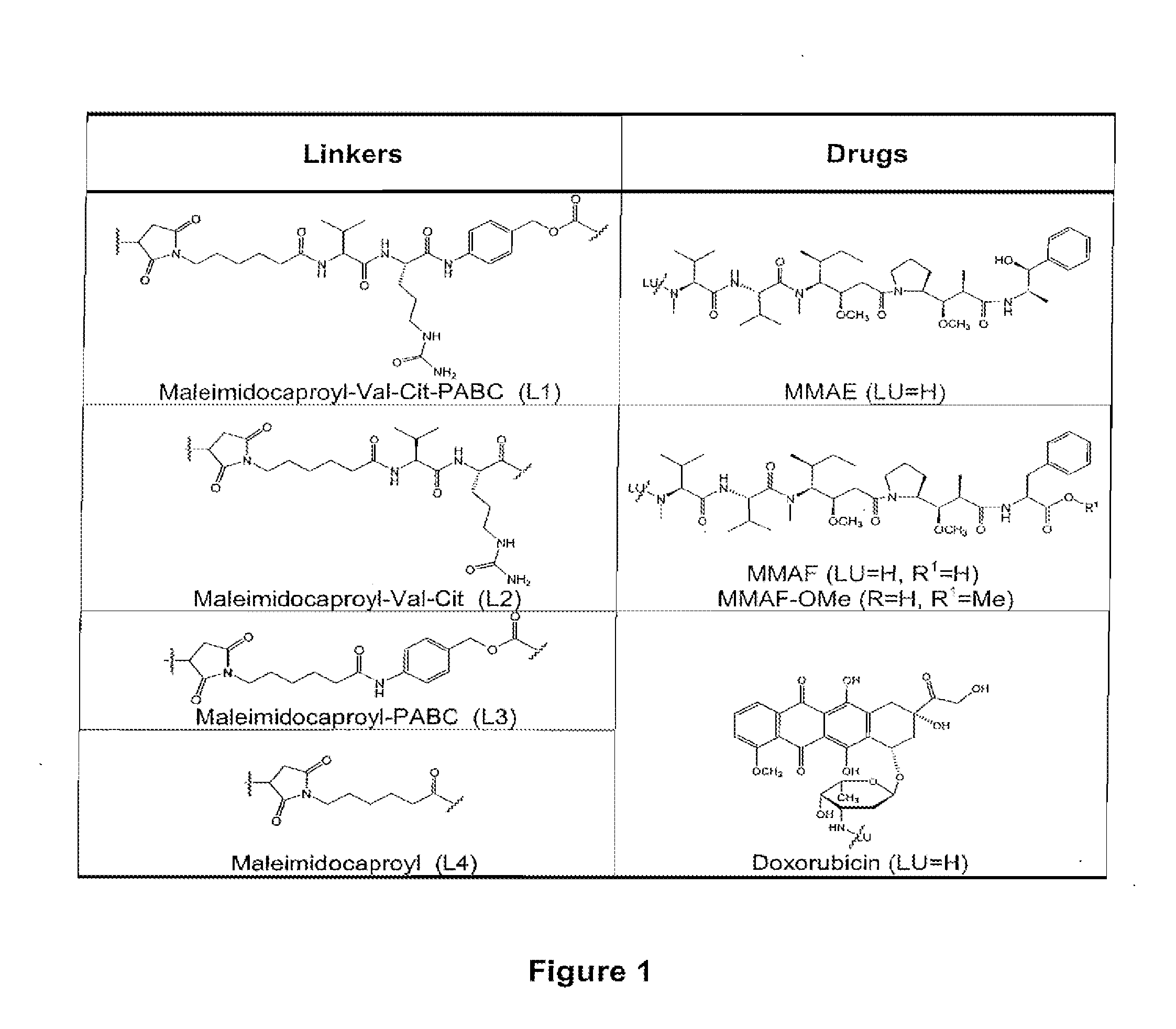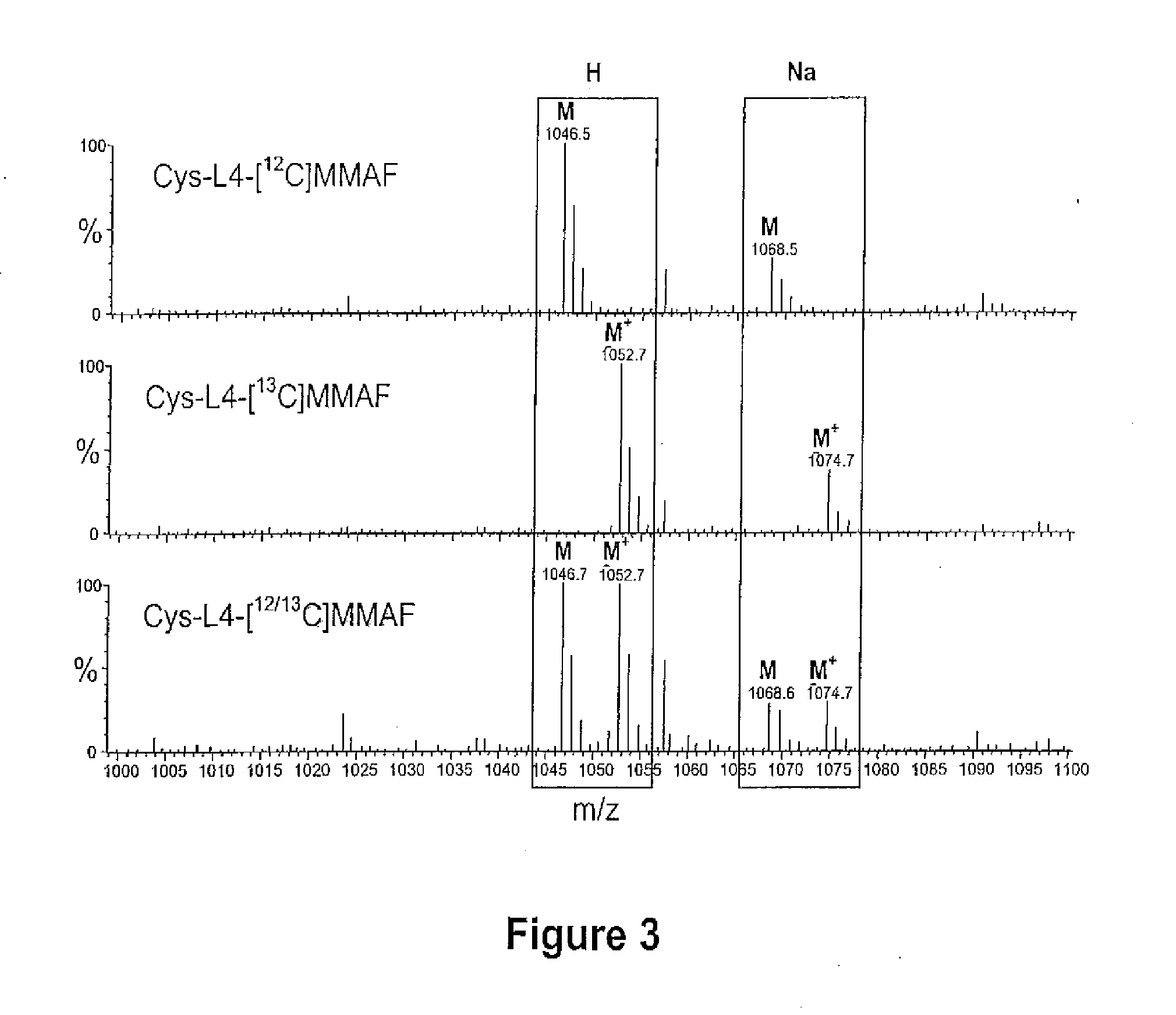Methods of treating drug-resistant cancers
a cancer and drug-resistant technology, applied in the field of drug-resistant cancers, can solve the problems of limited efficacy of such inhibitors and associated toxicity of patients' administration of p-gp inhibitors, and achieve the effects of improving bioavailability of drug-linker-ligand conjugates or intracellular metabolites of drug-linker-ligand conjugates in mammal cells, improving bioavailability of drug-linker-ligand conjugates or intracellular metabolites
- Summary
- Abstract
- Description
- Claims
- Application Information
AI Technical Summary
Benefits of technology
Problems solved by technology
Method used
Image
Examples
example 1
[0317]Cell lines expressing CD71 (transferrin receptor) or Lewis Y antigen were treated with antibody drug conjugates (ADCs). The ADCs were composed of antibodies, OKT-9 for CD71 and cBR96 for Lewis Y antigen, linked to MMAF or doxorubicin by a linker, “val-cit” (maleimidocaproyl-valine-citrulline-p-aminobenzyloxycarbonyl-; also referred to as “vc”). Each ADC contained an average of 8 drugs per mAb. When delivered as an ADC using either antibody, MMAF retained its ability to kill drug resistant cell lines. The doxorubicin-based ADC was ineffective at killing the resistant cell lines. ADCs carrying valcit-MMAF molecules are therefore capable of selectively targeting and killing drug resistant cells as well as sensitive cells.
Cell Lines.
[0318]The following parental and drug resistant cell lines were used to determine their MMAF-drug sensitivity. The resistant cell lines exhibit P-gp-mediated drug resistance.
TABLE 2Parental and Drug-Resistant Cell LinesParent:Drug Resistant Progeny*Sou...
example 2
[0332]MMAF is an antimitotic auristatin derivative with a charged C-terminal phenylalanine residue that attenuates its cytotoxic activity, most likely due to impaired intracellular access. In vitro cytotoxicity studies indicated that mAb-maleimidocaproyl-valine-citrulline-p-aminobenzyloxycarbonyl-MMAF (mAb-L1-MMAF) conjugates showed >2,200-fold more anti-proliferative activity than free MMAF on a large panel of CD30 positive hematologic cell lines. MMAF ADCs induced complete and partial regressions of established xenograft tumors at well tolerated doses. To further optimize the ADC, several linker variants were generated in which various components within the L1 linker were either altered or deleted. One of the linkers contained a non-cleavable maleimidocaproyl (L4) spacer between the drug and the mAb. cAC10-L4-MMAF was approximately as potent in vitro as AC10-L1-MMAF against a large panel of cell lines, and was equally potent in vivo. AC10-L4-MMAF was tolerated at >3 times the MTD ...
PUM
| Property | Measurement | Unit |
|---|---|---|
| drug resistance | aaaaa | aaaaa |
| hydrophobic | aaaaa | aaaaa |
| resistance | aaaaa | aaaaa |
Abstract
Description
Claims
Application Information
 Login to View More
Login to View More - R&D
- Intellectual Property
- Life Sciences
- Materials
- Tech Scout
- Unparalleled Data Quality
- Higher Quality Content
- 60% Fewer Hallucinations
Browse by: Latest US Patents, China's latest patents, Technical Efficacy Thesaurus, Application Domain, Technology Topic, Popular Technical Reports.
© 2025 PatSnap. All rights reserved.Legal|Privacy policy|Modern Slavery Act Transparency Statement|Sitemap|About US| Contact US: help@patsnap.com



